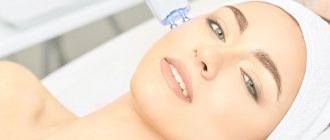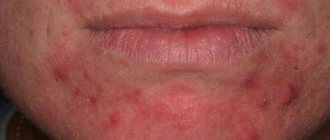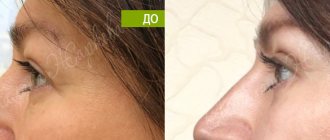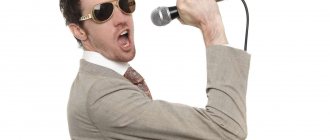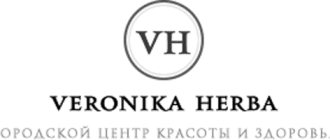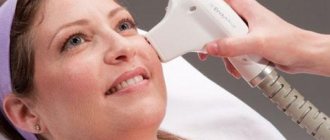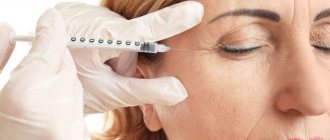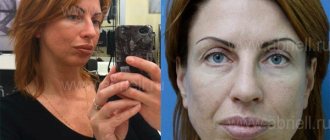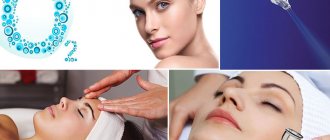The task of laser rejuvenation — skin renewal while eliminating age-related and aesthetic changes:
- small wrinkles,
- sagging skin with tissue ptosis,
- uneven skin color and tone,
- scar changes, etc.
Also with laser rejuvenation:
- pores narrow,
- skin density improves,
- elasticity and firmness of the skin returns.
It is important to understand that laser rejuvenation is not limited to just two procedures of peeling and resurfacing - between the light parameters of laser peeling and serious deep resurfacing there are many options for setting up the laser device, each of which makes the laser procedure unique.
An experienced cosmetologist with a good laser device has many tricks that he can use, choosing different modes to solve the problems of each specific patient!
The success and effectiveness of the laser procedure depends on the experience of the cosmetologist who performs this procedure.
What it is
Laser rejuvenation is carried out using a special device. The beam moves along the body in a special “handle”. The pulses penetrate the skin layers to a depth of 1 mm. Under the influence of high frequencies and heat, old cells are destroyed. Intact tissues begin to respond by releasing increased amounts of elastin and collagen, which restore the damaged dermis. Renewed skin becomes denser and more elastic. The optimal temperature is selected for each treated area to avoid burns.
In this case, treatment is practiced not only on the face, but also on other parts of the body. The hips, abdomen, chest, forearm, and hands suffer no less from age-related wear and tear on the body.
As a result of the correct procedure, the following effects are noted:
- noticeable smoothing of deep wrinkles;
- disappearance of small facial wrinkles;
- discoloration of hyperpigmentation, stretch marks, post-acne, vascular network and scars;
- narrowing of enlarged pores;
- smoothing the surface of the dermis;
- the appearance of healthy skin color due to stimulation of blood circulation;
- tightening the contours of the face and body.
Noticeable improvements are visible after the first session. A course of 5 treatments of the problem area allows you to consolidate successful rejuvenation.
Laser peeling Pearl
Pearl laser peeling with a wavelength of 2790 nm on the latest generation Cutera device (USA) is an ablative method of skin rejuvenation and has a rehabilitation period. It is also called “pearl” for its ability to restore shine and radiance to the skin. The duration of the rehabilitation period depends on the parameters of the procedure and the aesthetic condition of the patient’s skin. On average it ranges from 3 to 7 days. The controlled depth of exposure, as well as the optimal balance of ablation and coagulation, distinguishes Pearl laser peeling from CO2 and erbium lasers presented on the cosmetology market. The procedure is safe for skin rejuvenation in the area around the eyes, neck and other delicate areas. The procedure time depends on the area of the treated areas. Facial treatment takes on average 15 - 20 minutes. The number of procedures depends on the problems the patient is dealing with and the type of skin. To obtain pronounced aesthetic results, 1-2 procedures with an interval of 1 month are sufficient.
Result:
- increasing skin elasticity and turgor, smoothing wrinkles;
- narrowing pores, smoothing skin texture;
- removal of age spots;
- smoothing of postoperative and traumatic scars, as well as atrophic ones;
- stretch marks become less noticeable.
Types of laser rejuvenation
There are several options for this procedure. Each has its own distinctive features. Selecting a variety for an individual problem will make the solution as productive as possible.
- Ablative. Works best on small spot defects. A single surface beam is used. Only the damaged area is exposed, healthy skin is not affected. The result is achieved quickly and lasts for a long time. Works well on facial wrinkles.
- Non-ablative. Works great with deep wrinkles, hyperpigmentation, sagging contours. A large area of skin is treated at a time (for example, the entire face). The longest beams are used. Only the hidden layers of the dermis are affected, the surface remains undamaged. Heat stimulates natural metabolic processes in cells. A pleasant side effect is the elimination of post-acne and large pores.
- Biorevitalization. Pulses are supplied for a short time with multiple repetitions. Thus, the rays painlessly break down dead cells and actively stimulate collagen production. Special cosmetics are used (usually hyaluronic acid), which the laser delivers deep into the skin. The method is used in the fight against deep wrinkles and persistent facial wrinkles. Has a cumulative effect.
Biorevitalization is one of the best alternatives to injections.
- Grinding. An erbium or sapphire laser gently removes the upper layers of outdated epidermis. Younger tissue remains, making the skin look tightened, smooth, and fine wrinkles become invisible.
- 4D rejuvenation. The fastest type. Lasting visible results appear after the first procedure. 4 types of beams are used (FRAC3, SmothLiftin, SupErficial, PIANO). This combination improves deep processes, restores elasticity and freshness to the skin, and copes with wrinkles of various sizes.
Injection procedures for facial rejuvenation
Injection rejuvenation is the administration of injections that help deliver biologically active substances relevant to its condition into the deep layers of the skin. Working at the cellular level, they significantly improve its condition and activate natural renewal processes. Botulinum toxin injections, biorevitalization, mesotherapy, ozone therapy, blanching, plasma lifting and PRP therapy cope well with this task.
| Method | The essence of the procedure | Main indications | results |
| Botulinum toxin injections (Botox, Dysport). | Botulinum toxin reduces the motor activity of facial muscles. | Expression wrinkles, increased muscle tone, spasms and involuntary contractions of facial muscles. | Smoothing facial wrinkles and preventing their formation. |
| Biorevitalization | Injection of hyaluronic acid. | Dryness, peeling, fine wrinkles, sagging skin. | Deep hydration, intensive healing, improved skin quality and light lifting effect. |
| Mesotherapy | Injection of meso-cocktails based on hyaluronic acid and topical biologically active substances. | Signs of photo- and chronoaging, minor aesthetic defects. | Improvement, stimulation of intradermal processes and natural renewal. |
| Ozone therapy | Injection of ozone (triatomic oxygen). | Swelling, rosacea, sagging, dryness, inflammation and problematic skin. | Improving blood supply, nourishing the skin, stimulating its internal processes and natural renewal. |
| Blanching | Correction (filling) of fine wrinkles and skin folds with hyaluronic acid. | Superficial expression and age wrinkles, skin folds. | Smoothing the relief and complexion, improving the quality of the skin. |
| Plasmolifting | Injection of specially prepared plasma obtained from the patient’s own blood. | Signs of photo- and chronoaging of facial skin. | Improvement of health, improvement of skin quality and stimulation of natural renewal processes. |
| PRP therapy | Injection of blood plasma with a high concentration of platelets. | Wrinkles, sagging, uneven color, deterioration of the skin structure. | Powerful stimulation and natural rejuvenation for 5 - 10 years. |
Contraindications to injection anti-aging procedures include blood diseases, oncology, chronic diseases in the acute stage, skin lesions, pregnancy and other specific patient conditions.
Hardware procedures for facial rejuvenation
Hardware rejuvenation is the use of various types of energy (radio frequencies, microcurrents, electric current, etc.), which affects all skin structures, activates internal processes and natural renewal. The best hardware procedures for the face - RF lifting, SMAS lifting, fractional mesotherapy, myostimulation, electroporation, microcurrent therapy, hardware carboxytherapy, phototherapy.
| Method | The essence of the procedure | Main indications | results |
| RF lifting | Controlled heating and stimulation of deep skin structures with high-frequency electric current. | Wrinkles, sagging, folds, unevenness, sagging facial skin. | Lifting effect, activation of collagen synthesis, improvement of skin quality. |
| SMAS lifting | Impact of focused high-intensity ultrasound on the superficial muscular-aponeurotic system (muscular frame of the face). | Folds, sagging, gravitational ptosis (sagging skin), excess subcutaneous fat, double chin. | Pronounced lifting effect, clear oval face, activation of the synthesis of your own collagen. |
| Fractional mesotherapy | Perforating the skin with microneedles with simultaneous injection of meso-cocktails | Signs of photo- and chronoaging, correction of post-acne and small scars. | Strengthening regeneration, improving microcirculation, saturation with relevant biologically active substances, activation of natural skin renewal processes. |
| Myostimulation (myoplasty, myosculpture) | Stimulation of facial muscles with low-power electrical current pulses. | Flabbiness, folds, creases, unclear oval face, double chin. | Increasing muscle tone, smoothing skin texture, modeling a clear oval face. |
| Electroporation | Saturation of the skin with topical biologically active substances using low-power pulses of high-frequency electric current. | Problem skin, minor aesthetic defects, wrinkles, sagging, recovery after “aggressive” cosmetic procedures. | General improvement, normalization of skin functions, acceleration of metabolic processes and natural rejuvenation. |
| Microcurrent therapy | Stimulation of intradermal structures with low-frequency electrical pulse energy | Wrinkles, sagging, decreased local immunity and “lifelessness” of the skin. | Activation of the synthesis of new collagen, elastin, stimulation of cellular renewal processes. |
| Hardware carboxytherapy | Dosed injection of purified carbon dioxide into problem areas of the face. | Swelling, excess subcutaneous fat, sagging, defects of small vessels (rosacea), unhealthy complexion. Bruises under the eyes. | Improving blood supply, skin nutrition, activation of its vital functions, acceleration of metabolic processes and regeneration. |
| Phototherapy | Exposure to pulses of light of a certain spectrum and wavelength. | Signs of photo- and chronoaging, acne. | Stimulation of cellular activity, vital functions and natural renewal processes. |
Hardware cosmetic procedures for facial rejuvenation are not performed if the patient has an individual intolerance to the effects, malignant tumors, exacerbation of chronic pathologies, heart disease, pregnancy and other specific conditions.
Laser treatments for facial rejuvenation
Laser rejuvenation is the use of light radiation, which, depending on the desired (desired) effect, can remove (evaporate) micro areas of the skin with signs of photo-, chronoaging and aesthetic defects, as well as stimulate the physiological activity of deep-lying structures. The most popular facial procedures in this area are laser resurfacing, carbon peeling and fractional laser rejuvenation.
| Method | The essence of the procedure | Main indications | results |
| Laser resurfacing | Evaporation of altered areas by light radiation of the infrared spectrum with a wavelength of up to 10.6 microns. | Pronounced signs of photo- and chronoaging, aesthetic defects. | Radical skin rejuvenation, lifting, stimulation of collagen synthesis and natural renewal processes. |
| Carbon peeling | Exposure to the surface of skin treated with a gel based on carbon dioxide nanoparticles using light radiation with a wavelength of 532 - 1320 nm. | Thickening of the epidermis, uneven complexion, problematic skin, dysfunction of the sebaceous glands, enlarged pores, sagging, fine wrinkles. | Deep peeling, intensive healing, smoothing out signs of aging, stimulation of interstitial processes. |
| Fractional laser rejuvenation | Perforating the skin with infrared light radiation with a wavelength of 10.6 microns. | Pronounced signs of photo- and chronoaging, aesthetic defects. | Evaporation of altered micro-areas of tissue, a pronounced lifting effect, activation of regeneration processes and collagen synthesis for radical facial rejuvenation. |
Laser rejuvenation is not carried out in case of individual intolerance to light exposure, predisposition to the formation of keloid scars, systemic use of anticoagulants, blood diseases, oncology, herpes, pregnancy, exacerbation of chronic diseases, fresh tanning and other specific patient conditions.
Aesthetic procedures for facial rejuvenation
Aesthetic rejuvenation - the use of fillers, mesothreads, therapeutic threads and other professional preparations, with the help of which they replenish the lost volume of soft tissues, model a beautiful oval of the face and stimulate the processes of natural cellular renewal. The best methods of facial rejuvenation in domestic aesthetic cosmetology are 3D lifting, Radiesse vector lifting, face lifting with mesothreads, filling wrinkles with fillers, PRX-T33 peeling.
| Method | The essence of the procedure | Main indications | results |
| 3D lifting | Formation of a soft-hard facial frame using special threads. | Excess skin, sagging, folds, uneven relief, axial asymmetry of the face. | Lifting effect, clear, aesthetically attractive oval of the face. |
| Vector lifting Radiesse | Volumetric facial modeling using Radiesse filler. | Wrinkles, loss of soft tissue volume, skin folds. | Young, clear oval face, lifting effect, stimulation of the synthesis of your own collagen. |
| Facelift with mesothreads | Thread lifting using gradually absorbable mesothreads. | Uneven relief, creases, unclear oval of the face, sagging skin. | Non-surgical lifting, clear oval face, smoothing of the skin. |
| Filling wrinkles with fillers | Injection of fillers for facial contouring. | Wrinkles, folds, sagging, uneven relief, nasolacrimal groove, facial asymmetry. | Smoothing the skin, replenishing lost volume, modeling facial contours. |
| Peeling PRX-T33 | Medium peeling using a preparation based on trichloroacetic and kojic acid. | Signs of photo- and chronoaging, minor aesthetic defects. | Radical renewal of the epidermis and upper layer of the dermis. |
The use of fillers, mesothreads and other professional cosmetic preparations is prohibited in cases of individual intolerance to their components, oncology, herpes, skin lesions, pregnancy, etc.
Principles for choosing procedures for facial rejuvenation
The variety of cosmetological rejuvenation techniques confuses not only clinic patients, but also specialists practicing in this area. Indeed, when choosing a particular procedure, it is necessary to take into account many factors:
- patient history;
- contraindications;
- facial skin type;
- individual characteristics of the skin;
- severity of signs of aging;
- associated dermatological problems;
- the patient's lifestyle and habits;
- desired result, etc.
Preparation and recovery after rejuvenation is another issue that influences the choice of technique. After all, patients often want to get the desired result as quickly as possible. Due to the fast pace of life, they are not always ready to follow their doctor’s recommendations and put up with restrictive measures.
Preliminary consultations with a specialist at a clinic or specialized beauty salon help solve both problems of choice. The feasibility of carrying out a particular anti-aging procedure is determined exclusively by a cosmetologist - after a thorough diagnosis of the condition of the skin and its problems, as well as prediction of the desired effect. We can only give general recommendations on the choice of procedures - according to the patient’s age.
Effective cosmetic procedures for the face after 30 years
- Biorevitalization.
- Mesotherapy.
- Botulinum toxin injections.
- Myostimulation.
- Microcurrent therapy.
- Electroporation.
- Blanching.
- Filling wrinkles with fillers.
Effective facial treatments after 40 years
- Mesotherapy.
- Plasmolifting.
- Botulinum toxin injections.
- Ozone therapy.
- Fractional mesotherapy.
- RF lifting.
- SMAS lifting.
- Phototherapy.
- Carbon peeling.
- Carboxytherapy.
- Vector lifting Radiesse.
The best cosmetic procedures for the face after 50 years
- Ozone therapy.
- PRP therapy.
- SMAS lifting.
- Photorejuvenation.
- Fractional laser rejuvenation.
- 3D lifting.
- Filling wrinkles with fillers.
- Peeling PRX-T33.
Studying the above list of techniques, two main conclusions can be drawn.
- With mild signs of photo- and chronoaging, injection and hardware procedures will be sufficient for visible rejuvenation. They demonstrate a “delicate” principle of action, with the help of which the aging process can be inhibited.
- With pronounced age-related changes, it is no longer possible to do without the use of laser and aesthetic techniques. With their help, you can powerfully remove (correct) even deep wrinkles and folds. And injections and hardware rejuvenation will help strengthen and maintain the results obtained - techniques that are relevant for any age.
Important! Carefully choose a specialist for non-surgical rejuvenation. After all, the final result of the procedures depends on his professionalism. If you have any questions, call!
Pros and cons of the procedure
Laser skin rejuvenation has the following advantages:
- no marks or scars. All redness disappears no later than 3-4 days after treatment;
- the ability to solve problems of various sizes;
- quick visual effect (1-5 procedures);
- absence of painful sensations (the norm is a slight tingling sensation);
- the ability to treat sensitive areas (neckline, eyelids, nasolabial folds);
- combination with many cosmetic procedures is acceptable.
Among the disadvantages it is worth noting:
- presence of contraindications;
- high cost (average price - from 25 thousand rubles);
- The duration of 1 session can be at least an hour.
Conclusions and recommendations
The choice of a specific laser rejuvenation procedure is made by a cosmetologist based on diagnostic results, indications and contraindications, current tasks, cosmetological “history” and the patient’s expectations.
The experience of a cosmetologist is very important when choosing one or another mode of operation of the device.
The level (novelty) of the laser installation is also important - after all, the newer the device, the more accurate and modern the programs embedded in it. We use the 2021 AcuPulse device in our clinic!
Contraindications
Laser rejuvenation cannot be performed within 14 days after a chemical peel. Also, the cosmetologist will not undertake the procedure if there is obvious inflammation in the treated area, during the period of exacerbation of dermatitis or psoriasis.
Laser is strictly prohibited during pregnancy, for people suffering from epilepsy, hypertension, type 1 diabetes, malignant neoplasms, and mental disorders. You should use this technique with caution when taking hormonal, psychotropic drugs, or drugs that cause photosensitivity.
Indications for such procedures
Hardware cosmetology involves the use of professional medical equipment to influence the skin using:
- electromagnetic emitters;
- ultrasonic devices;
- laser;
- light pulses;
- vacuum.
During the procedure, special preparations in the form of gels and lotions are also used. The result of the manipulations is skin cleared of dead cells, scars, pigmentation and inflammation, and clean pores.
The procedure is recommended if necessary:
- carry out figure correction;
- remove wrinkles and stretch marks;
- cleanse the skin;
- make pigment spots lighter or remove;
- eliminate scars left after operations;
- remove tattoos;
- eliminate unnecessary hair on the face and body;
- remove spider veins and other skin defects;
- strengthen the hair roots on the head.
The procedure is contraindicated in:
- malignant neoplasms;
- pregnancy and lactation;
- low blood clotting rate;
- individual intolerance to the drugs used.
Home conditions will not allow you to get a lasting effect from the procedure. Therefore, to achieve a longer-lasting result, experts advise contacting a professional clinic. Employees will provide detailed advice on all issues related to methods of influence.
Side effects
During the first hours (sometimes days) after laser exposure, local itching and redness of the skin may be observed. Some patients develop peeling, crusts, and an exacerbation of herpetic disease is provoked. In the absence of proper care, cases of suppuration are known (contact with dirty hands, scratching, early use of cosmetics).
Scarring and pigmentation are observed in cases of deliberate concealment by the patient of information about medications taken, pathological conditions, and predispositions.
The main prevention of side effects is the use of soothing ointments based on panthenol and creams with spf above 15 units.
Significant help is provided by temporary abstinence from steam (sauna, steam bath), antibiotics and hormones, refusal of aggressive skin care products, visiting a solarium and being in the open sun.
Laser rejuvenation has many benefits. A significant drawback for some users is the required amount. How much you will have to invest depends on the required number of procedures. A portable device for home use can be an optimal replacement for salon visits. The desired device can be selected according to the descriptions and recommendations of the manufacturers.
Hardware rejuvenation cosmetology at home
Recently, there has been an increase in demand for hardware cosmetic treatment. Thanks to the increased popularity of such procedures, devices designed for home use have begun to appear on the market. They are sold in specialized stores that sell medical equipment. Another purchasing option is through an online store. However, it is necessary to study all the pros and cons of such devices.
This is quite a profitable purchase, since the device will last for more than one year. Despite the high cost of a high-quality device, it quickly pays for itself. After all, one such portable unit can serve not only the owner, but her family and friends.
What unpleasant consequences could there be?
Firstly, do not be alarmed if after the session your facial skin turns red and burns. This is not a sign of unsuccessful surgery, but a natural reaction of the body. A couple of hours after surgery, the skin around the nose and eyes may swell - this is also natural. To make swelling go away faster, remove excess fluid from the body: take a diuretic, do not eat salty or spicy foods.
Waking up the next day after the procedure, you were horrified to find ichor on your face? Then it hardened and formed a nasty crust all over your face? Don't be alarmed, this is also natural. Phototherapy of this type involves the removal of the upper protective layer of the skin, and a new one is formed under the crust. Therefore, under no circumstances should you touch your face, trying to tear off the scab: you can get an infection and then be left with scars on your face. The crust falls off on its own as the tissue recovers. This process will begin only a week after the operation: be patient until then. And then for about another month the face will be pink and very sensitive to light - so you will have to use protective creams.
There are also side effects after fractional rejuvenation. The skin may break out, itch for several days, and become uneven in color. All this passes sooner or later, but the sensations are very unpleasant. They are more likely to occur in patients with particularly sensitive skin, or in girls with vegetative-vascular dystonia.
Care after fractional rejuvenation is prescribed individually, but there are also general recommendations. It is worth washing your face with boiled water, but, of course, not hot. It would be even better to use ozonated water. No scrubs or peelings until the facial skin is completely restored. You can’t go out in the sun for at least a week, and for another week after that you can only go out after applying a cream with a protection level of at least 30 to your face. Well, you need to be careful about your body as a whole: get enough sleep, take vitamins. With proper rehabilitation, you can forget about unpleasant sensations in just two weeks!
Laser radiation parameters
Age-related skin changes can manifest themselves at various levels - in the stratum corneum, living cells of the epidermis and dermis. By selecting the parameters of laser radiation, it is possible to achieve an optimal effect on the target structures.
The main physical parameters that determine the characteristics of the action of lasers on biological tissues include:
- wavelength;
- energy flux density;
- pulse duration.
The wavelength (λ) of laser radiation determines the characteristics of its interaction with tissues and the intensity of absorption by chromophores. The absorption intensity of the laser beam depends on the wavelength, which is determined by the absorption spectrum of the chromophores (Fig. 1). Therefore, when selecting laser treatment options, it is necessary to take into account both their absorption peaks and their depth.
Energy flux density . The severity of the effect on the chromophores and the degree of direct damage to the target structure are determined by the energy (J) of laser radiation and its power (W), which characterizes the rate of arrival of this energy. In practice, these parameters are used in terms of per unit area - in the form of energy flux density (J/cm2) and energy flux speed (W/cm2).
Rice. 1. Absorption spectra of various skin chromophores
Pulse duration . The laser can emit beams in both continuous and pulsed modes. The latter allows you to avoid unwanted overheating and damage to non-target structures by cooling the tissue in the intervals between pulses.
The duration of the pulse and the breaks between them are determined taking into account the thermal relaxation time (TTR) for a given target - the period required for the heated area to transfer part of its heat (63%) to the surrounding tissues. If the pulse duration is longer than the TTP or the interval between pulses is reduced, then the heating will spread beyond the target, which can lead to unwanted overheating of neighboring structures [13, 14].
Effect of laser radiation on the skin
When tissues absorb high-intensity laser radiation, they heat up (Table 1, Fig. 2). The degree of temperature increase depends on how much energy is transferred per unit area (i.e., energy flux density), as well as the rate of temperature equalization between the heated and adjacent cold areas. The latter can be regulated by changing the duration of pulses and inter-pulse intervals, taking into account the time of thermal relaxation of tissues.
Table 1. Skin reaction when exposed to laser radiation [30]
| Temperature (°C) | Tissue changes |
| 40–50 | Conformational changes in molecules, destruction of cell membranes |
| 60–80 | Coagulation |
| > 100 | Vaporization (ablation) |
| > 150 (long term exposure) | Carbonization |
Rice. 2. The result of the thermal effect of laser radiation on the skin
When the temperature rises within 40–50°C, conformational changes in molecules are observed, accompanied by the destruction of intramolecular bonds and changes in membranes. If such heating continues for several minutes, a significant percentage of the tissue will undergo necrotic changes.
When the temperature rises above 60°C, denaturation of proteins and collagen is observed, which causes tissue coagulation and cell necrosis.
Heating tissues to 100°C and above leads to the fact that water molecules, contained in large quantities in living cells, begin to evaporate together with fragments of the structural components of the tissue. At the same time, they “carry away” excess heat, which helps prevent a further increase in temperature in the surrounding tissue. However, in the case of prolonged exposure to such temperatures (after the evaporation of all water molecules), this process is replaced by carbonization (charring) - blackening of adjacent tissues and the appearance of smoke are noted. Often it is a parasitic effect and leads to severe overheating of surrounding tissues.
The various thermal effects of laser radiation on tissue are almost never observed separately; most often, a temperature gradient of reactions and corresponding thermal zones are formed (Fig. 3). By selecting specific parameters of exposure (wavelength, energy, pulse duration), it is possible to achieve the predominance of certain reactions [30].
